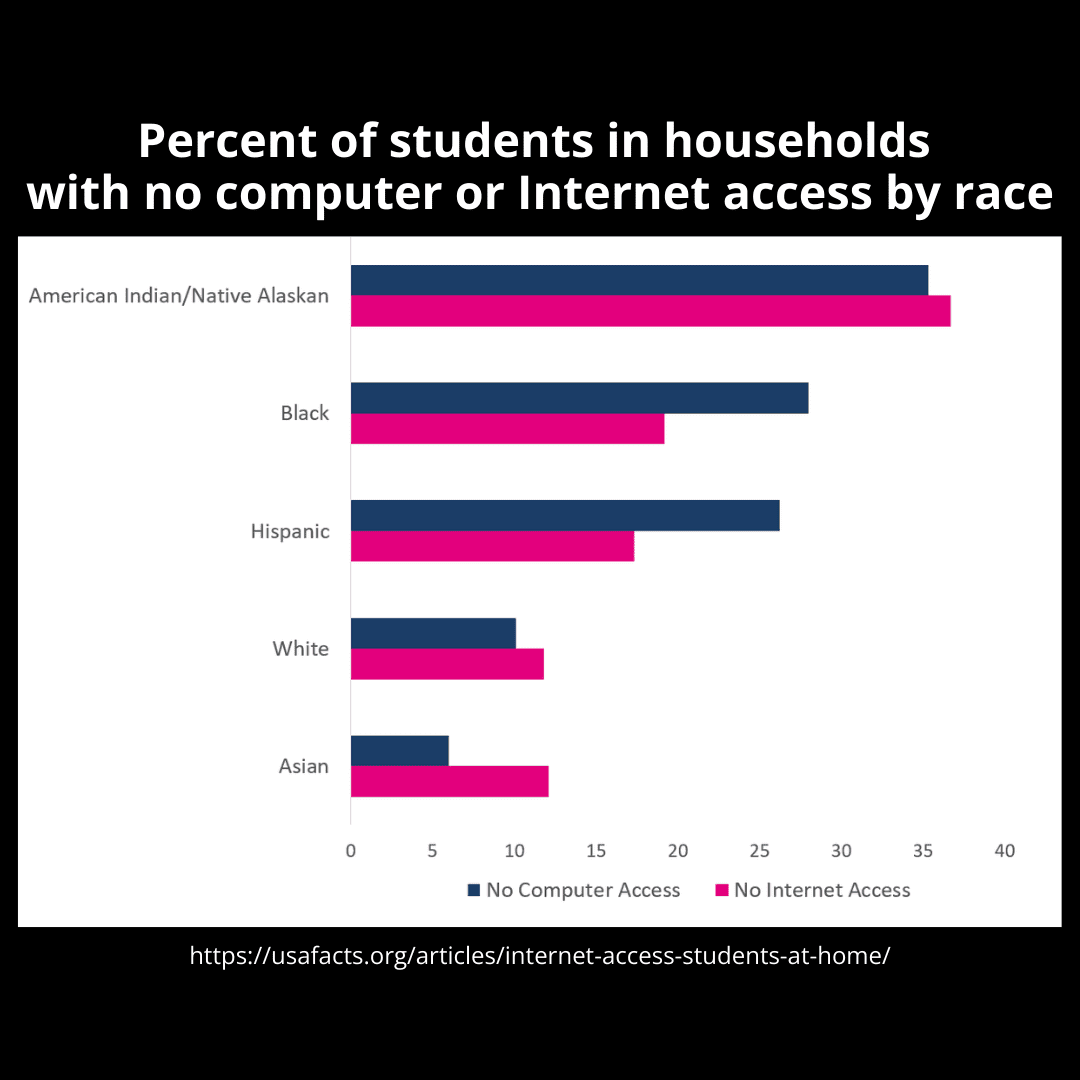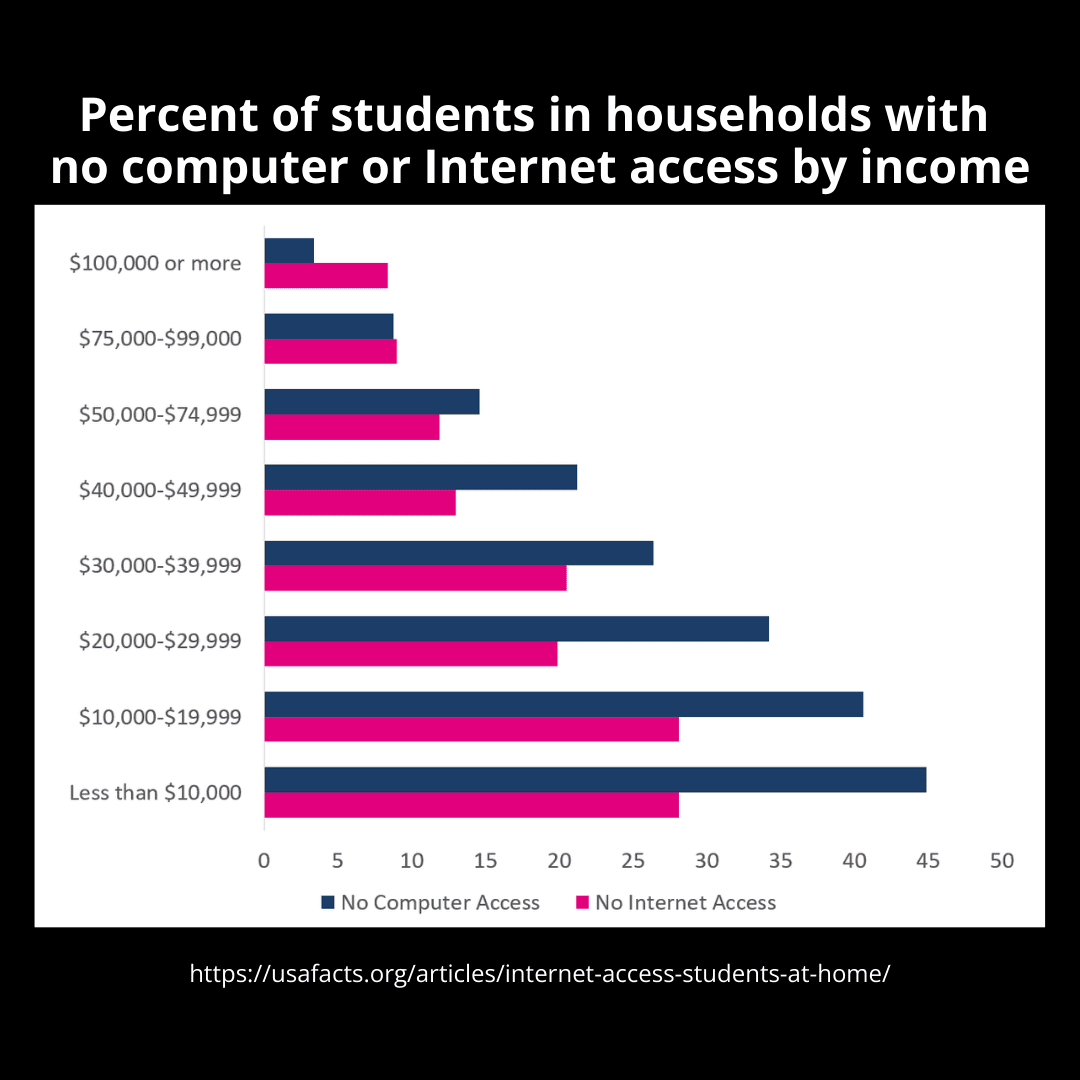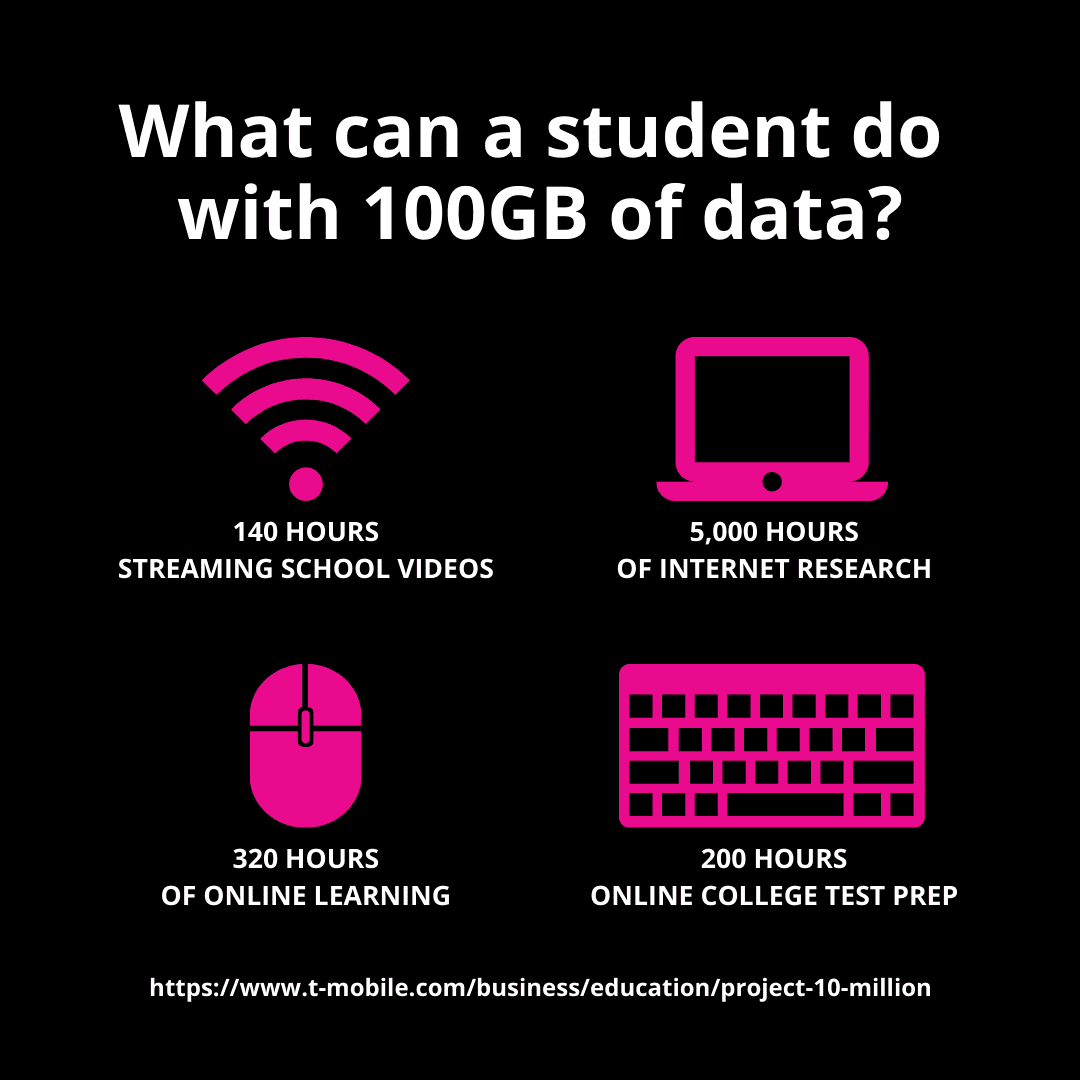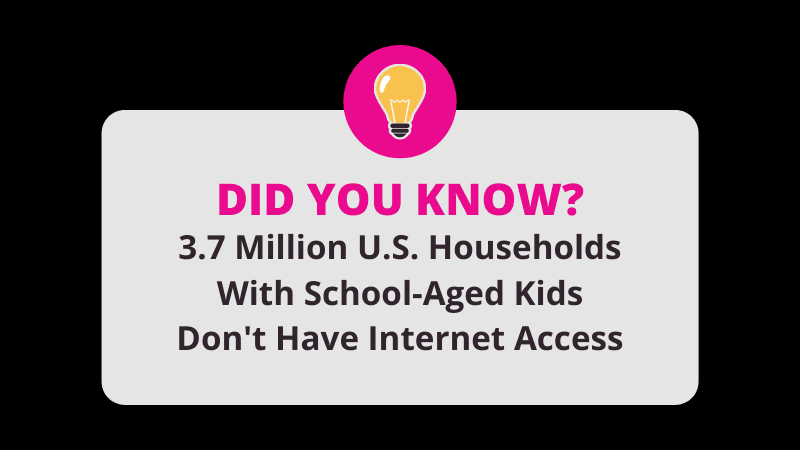When the COVID-19 lockdowns happened, teachers already knew that we had students in our classrooms without access to computers and/or the internet. So we did what we always do. We advocated for our students. Teachers led the charge in making sure their districts provided laptops, tablets, and mobile hotspots to any student who needed them to work from home. The past three years have shone a spotlight on this problem. Now, T-Mobile’s Project 10Million is stepping up to be part of the solution.
How many students struggle to access the internet from home?
In the United States, 4.4 million households with student-age children lack consistent access to a computer. 3.7 million of these households lack internet access. The problem is worse for our minority students and our students living in poverty. In April 2020, a study conducted by the U.S. Census Bureau and several other agencies highlighted this inequity. Of the Native American/Native Alaskan households with children surveyed, approximately 35 percent of them reported not having access to a computer. 38 percent reported not having access to the internet. In Black and Hispanic households with children, approximately 25 percent didn’t have a computer. In those households, approximately 16 percent didn’t have the internet.


What does this digital gap mean for our students?
Digital equity is an issue we should all be passionate about. The National Center for Education Statistics estimates that 9 million children ages 3 to 18 have difficulty completing online assignments due to access issues like those mentioned above. This gap has always existed, but COVID-19 has made the issue worse. Now, many teachers provide more assignments online than ever before. Because of this, these students are likely to fall even further behind their peers. Additionally, their parents will continue struggling to find ways to communicate with their child’s teachers and school. Without this vital connection, they are less likely to be able to support their child’s education. And the problems don’t end at graduation. Lack of access to internet technology puts people at a disadvantage in higher education, employment, healthcare, and more. This simply isn’t a problem we can ignore. This is why T-Mobile created Project 10Million.
What is T-Mobile’s Project 10Million?
Project 10Million aims to provide free internet access to millions of underserved K-12 student households. T-Mobile is partnering with school districts across the country to provide free high-speed data and free mobile hotspots. Additionally, it can offer access to at-cost laptops and tablets. There are several options for data usage as well. Each eligible student can get a plan that offers 100GB of data per year for free. Or, school districts can apply for T-Mobile’s 100GB per month plan. For perspective, that’s about 3x the data T-Mobile saw used by students at the start of the pandemic. Finally, there’s a low-cost option for school districts that want unlimited data. All plans will utilize the T-Mobile network, and all will be completely free for students.

How can I connect my students?
T-Mobile has worked diligently to make this process as simple as possible. Click the button below to check out the ebook they’ve created just for educators. Sustaining Student Connectivity: Toolkit for Educators has tips and resources for building your district’s digital plan. Then, your district administrators can submit an interest form via a link on Project 10Million’s main page. A T-Mobile for Education representative will then reach out to schedule a call and walk through the program details and application process. Once the application process is complete and the school is officially in the program, T-Mobile’s team will work with administrators to identify eligible students and get them connected to service and hotspots they can distribute to their students. Learn how to get your students connected.
LEARN HOW TO GET YOUR STUDENTS CONNECTED



